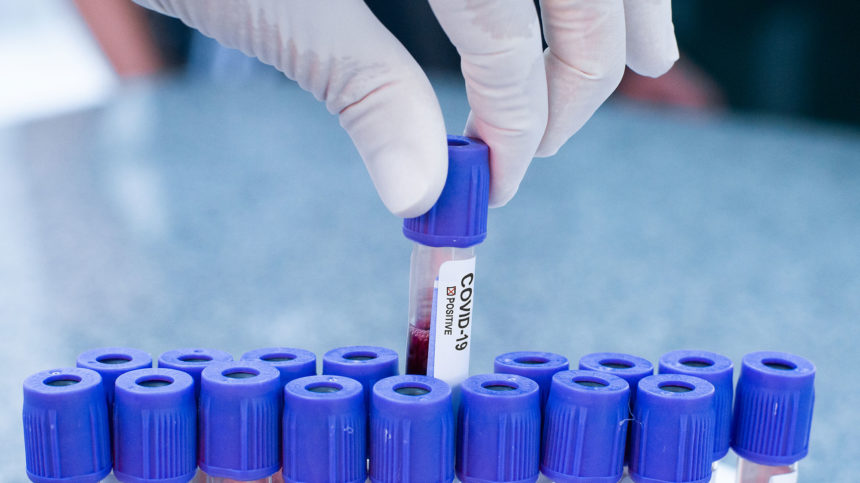
COVID-19’s ability to hide in plain sight will continue to crush expectations of halting its spread unless more and quicker testing at nursing homes sweeps the country, said a top U.S. researcher sifting through data of the biggest U.S. senior care provider.
Asymptomatic carriers, or “silent shedders,” are responsible for much of the introduction of the novel coronavirus in nursing homes, said Vince Mor, Ph.D., a Brown University researcher with decades of experience. He currently is analyzing outbreaks and prevalence among Genesis HealthCare facilities.
“There are lots of documented cases where people are shedding virus asymptomatically for four or five days before they become symptomatic. And in many cases, the younger people never become symptomatic,” Mor told attendees at an Alliance for Health Policy webinar on Friday.
Further, he said there is “lots” of anecdotal evidence suggesting positive cases in nursing homes that then become no longer positive, “just like a teenager: They get the disease, it didn’t affect them and then it went on, but they were shedding virus in that time. They were a silent shedder in that sense. The only hope we have is for testing.”
Genesis Chief Medical Officer Richard Feifer, M.D., confirmed that about half of all COVID-19 cases are asymptomatic, and the case fatality rate is about 20%.
“Outbreaks can still happen, despite outstanding infection control,” Feifer said during the same webinar. “We have many examples of nursing homes with outstanding quality ratings, no infection control findings or citations in the past, very experienced staff and infection preventionists, and outbreaks happen anyway. Lack of access to testing and fast results are costing lives.”
Feifer noted that until last week, nursing home personnel and patients were not at federal officials’ highest priority level for testing — and asymptomatic patients still aren’t, despite nursing homes being acknowledged as “ground zero.” While test turnaround times have improved from as long as 11 days to 24 to 48 hours, Feifer added, supplies and services are still woefully lacking.
“Swabs and testing are still inadequate in many states,” he said. “What we really need urgently is point-of-care rapid testing. For the virus, not the antibody.”
That could lead to quicker and more efficient cohorting, experts point out. Instead, nursing home residents — and workers especially — are left to often unwittingly share the virus, sometimes at multiple facilities.
Wrongly blamed
“What’s important to recognize is that there’s been this late recognition that nursing homes are, in some sense, the epicenter of the consequences of this pandemic,” said Mor, who has been a principal investigator in more than 40 grants funded by the National Institutes of Health into seniors’ health issues. “Nursing homes didn’t cause this pandemic. They’re the people, however, who bear the brunt of the phenomenon. Nursing homes and other congregate care settings have been sort of the biggest losers in many respects, with the most concentrated adverse effects of this pandemic.”
He said nursing homes have a long history of being blamed by a society eager to point its finger.
“Sometimes there are bad apples,” he acknowledged. “But this is not an issue of bad apples. This is an issue of where you are, not who you are.”
He added that U.S. patterns are consistent with others around the world.
“This is the same phenomenon that’s happening in Australia, Singapore, Norway, Israel, France,” Mor explained, showing webinar attendees corroborating charts. “A high proportion of all deaths due to COVID are associated with people living in residential and eldercare centers.”
The most important factors his research has turned up are that the size of a facility and the number of cases per 100,000 people in the county where a nursing home sits lead to a facility’s COVID-19 risk rate. Geographic areas with approximately twice the population density of others led to more than three times the rate of infections per 100,000 people in the area, he explained. Further, bigger nursing homes are at risk than smaller ones of becoming COVID-19 positive.
“It’s all about the traffic, the people who come in and out of the nursing home. Most people who carry the virus are asymptomatic in the community. That’s why it spread so efficiently,” he noted. “There is a very strong relationship across the entire country. Where the number of cases per 100,000 in the county are high, the number of cases in the skilled nursing facilities are also high.”
He added that counter to some assertions, regression analyses show that infection rates are unrelated to quality rankings, as long as proper study controls for population levels are put in place. He said that positive cases are more likely to appear in facilities that have had more admissions per bed in the year prior.
“Basically, it’s large urban facilities with more minority residents and counties with many COVID cases. Those are the epicenter, and those are the target and that’s the places that really need the help. Nursing homes need rapid testing in order to make operational decisions about how to mitigate it.”
Worker bonuses needed
Mor also called for “hazard pay” bonuses for nursing home workers since they are being asked to not only enter potentially dangerous work areas, but also to alter their behavior while off-duty. He said Rhode Island is a good example, since the state is providing supplemental funding for low-wage workers, including those in nursing homes and hospitals.
“This extra support for staff is really critical because the nursing homes and the patients need to rely on them to not go out boogying to the bars and grills when they open up, because they’ll catch it and they’ll bring it in because they won’t know they’ll have it and infect the patients,” Mor said. “And once the patients get it, they have a very high risk of dying. Protecting the lives of these frail patients is not just a job but a mission, a big sacrifice that must be rewarded.”




